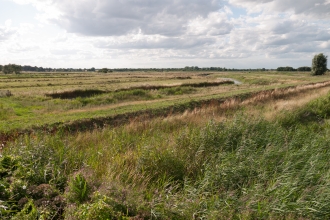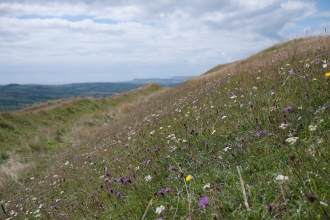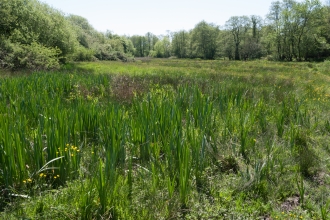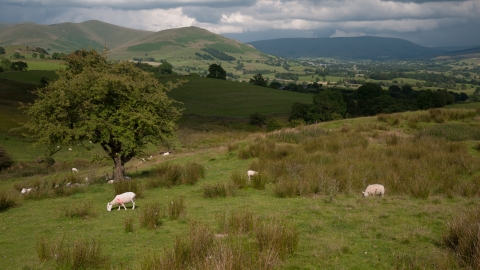
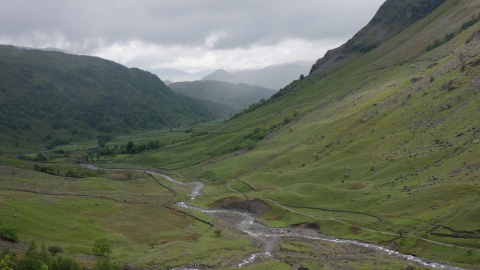
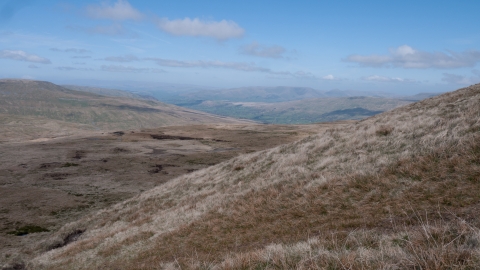
Upland acid grassland and rush pasture
What is it?
Upland acid grassland is made up of grass-dominated swards found on acid rocks, sands and gravels in the upland landscape. The vegetation type is dictated by soil type, drainage and grazing pressure.
Steeper, well-drained slopes and thinner soils support a springy turf of close-cropped sheep’s fescue and bent grasses, woven with soft branched mosses and stippled with the tiny flowers of tormentil and heath bedstraw. On more peaty soils (including degraded bog), tough mat grass can predominate, while deeper peat supports a distinctive sward of heath rush and common hair-cap moss in a community unique to Britain and Ireland. Particularly acid and boggy hillsides in the western uplands support vast areas of tussocky (thick and long) purple moor-grass. Rushes often form a part of upland acid grassland, marking out flushes and damp hollows, but are more predominant in rush pasture.
Upland rush pasture is often found between the lower limit of upland acid grassland and the enclosed pastures or hay meadows found in flat valley bottoms. Where the soils remain damp year-round, moisture-loving rushes are abundant. Grasses growing among and around the rushes typically include Yorkshire fog, sweet vernal-grass, creeping bent and red fescue, with a few herbs such as marsh bedstraw and creeping buttercup. The UK's upland landscapes are generally formed of acid rock, but soft and sharp-flowered rush give way to hard rush where calcareous rock is present.
Why is it like this?
In the uplands, tree-clearance and grazing created moorland. From the 18th century onwards, sheep farming expanded, and the headage (number of animals) -based agricultural subsidies during the last decades of the 20th century exacerbated the trend. Heavy grazing eliminated heathland species, encouraging mat grass and heath rush; both relatively unpalatable to sheep. More recent changes in incentives have brought sheep numbers down, and so a return of heathland.
Distribution in the UK
Widespread and abundant across the uplands.
What to look for
Damp, flushed areas tend to be the most diverse, supporting a variety of sedges, globeflower and grass-of-parnassus. In autumn, keep an eye open for small, colourful waxcap fungi in shorter swards.
In rush pasture in particular, listen out for the calls of a suite of characteristic waders, though their populations are now sparse. Agricultural intensification in the second half of the 20th century led to a significant decline in the number of breeding skylark, curlew, lapwing and redshank and the local loss of snipe.
Overhead, you may catch sight of buzzard and merlin, while black grouse can be found where there is heathland nearby. In the Lake District and Highlands, look out for low-flying mountain ringlet.
Conservation
On rush pasture, light, seasonal cattle-grazing is the best way to create a varied sward suitable for a range of waders, which have slightly different requirements from each other in terms of length of sward and rush cover. However, changes in agricultural economics have led to a reduction in cattle farming in the uplands in recent decades. Rushes are also sometimes cut after the breeding season to prevent their spread.
Waders are sparse on upland acid grassland, which is perhaps best valued as an expression of centuries of upland farming with its many associated traditions and skills, rather than for its wildlife. There is growing interest in shaping the management of upland acid grassland towards heathland or woodland restoration.


